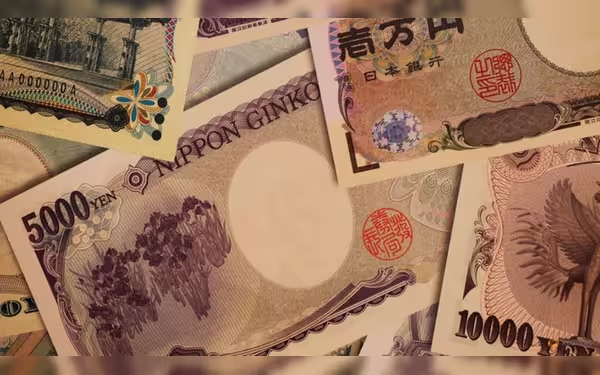Saturday, November 16, 2024 05:28 PM
Dollar Weakens as Yen Strengthens Ahead of Fed Meeting
- Dollar weakens, yen reaches highest level in over a year.
- Investors anticipate significant Federal Reserve rate cut.
- Treasury yields decline, impacting currency trading strategies.
 Image Credits: channelnewsasia
Image Credits: channelnewsasiaThe U.S. dollar weakens while the yen strengthens as investors anticipate a significant Federal Reserve rate cut this week.
The financial markets are currently experiencing significant fluctuations, particularly with the U.S. dollar and the Japanese yen. As of Monday, the dollar has weakened, while the yen has surged to its highest level in over a year. This shift comes as investors are increasingly anticipating a substantial rate cut by the Federal Reserve, which is set to meet later this week. The dollar was trading at 140.01 yen, having dipped as low as 139.58 yen during the session, marking a notable decline from its previous levels.
The Federal Reserve's meeting on September 17-18 is a focal point for market participants, coinciding with policy announcements from both the Bank of England and the Bank of Japan later in the week. Recent comments from Fed officials and various economic data have led to a reassessment of the likelihood of a significant rate cut. Investors are now weighing the possibility of a 50 basis point cut against a more conservative 25 basis point reduction. Futures markets are currently pricing in a 100% chance of a quarter-point cut, with a 60% probability of a larger move.
Niels Christensen, a chief analyst at Nordea, emphasized the importance of the Fed's decision, stating, "It's all about the Fed and the question about whether it will be a big 50 basis point cut or a smaller 25 basis one." This uncertainty has contributed to the dollar's softness across the board, as the dollar index, which measures the currency against six others, fell by 0.3% to 100.69.
In the lead-up to the Fed meeting, Treasury yields have also been declining, particularly as expectations grow for a more aggressive monetary policy. The benchmark 10-year yields have decreased by 30 basis points in the past two weeks, while two-year yields, which are more closely tied to monetary policy expectations, have dropped from approximately 3.94% to around 3.55%.
For investors, trading the dollar for yen has emerged as a straightforward strategy amid falling Treasury yields. Chris Weston, head of research at Pepperstone, noted, "While speculators are short and riding this lower, this trend is clearly one to align with." This trend is further supported by the Bank of Japan's anticipated decision to maintain its short-term policy rate at 0.25%, despite having raised rates twice this year. The narrowing interest rate gap between Japan and other major currencies has bolstered the yen, leading to the unwinding of billions of dollars in yen-funded carry trades.
As the week progresses, investors are also keeping a close eye on the Bank of England's upcoming interest rate decision, with expectations that it will hold its key rate at 5%. Meanwhile, the European Central Bank recently cut interest rates by 25 basis points, but President Christine Lagarde has tempered expectations for further reductions in the near future.
In summary, the current financial landscape is marked by significant anticipation surrounding the Federal Reserve's upcoming meeting. With the dollar softening and the yen strengthening, market participants are navigating a complex environment influenced by interest rate expectations. As these developments unfold, it is crucial for investors to stay informed and consider the broader implications of monetary policy changes on global currencies.













